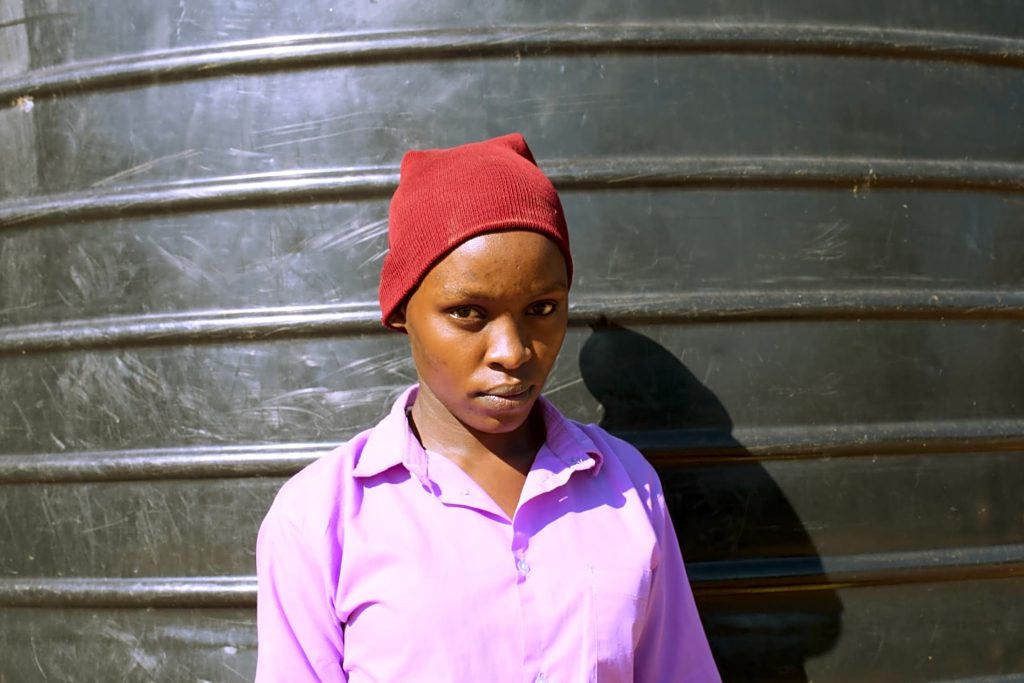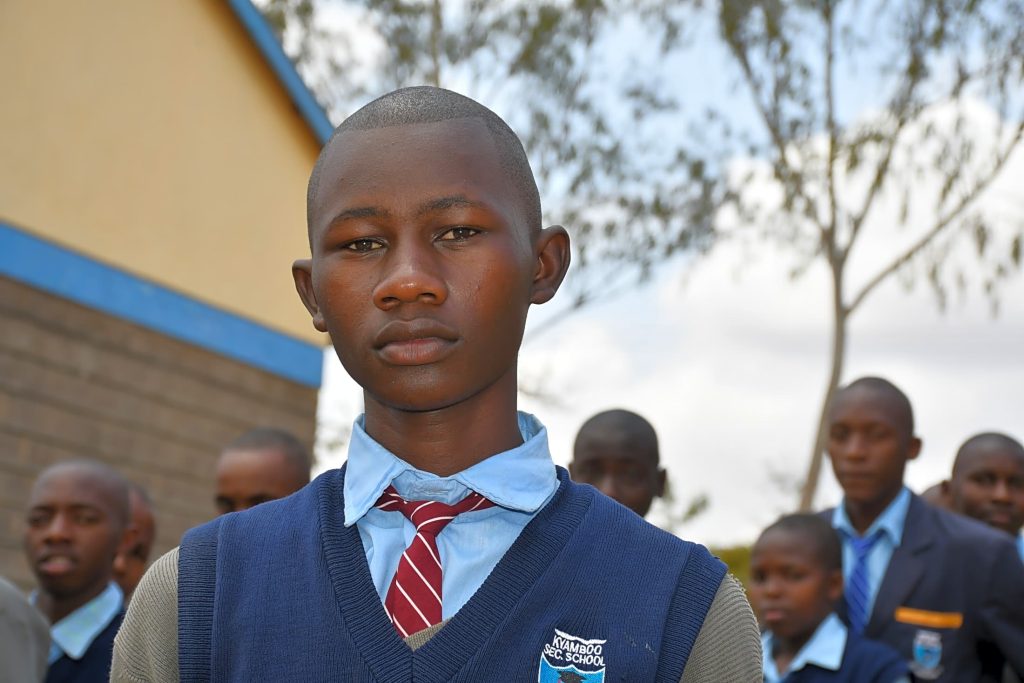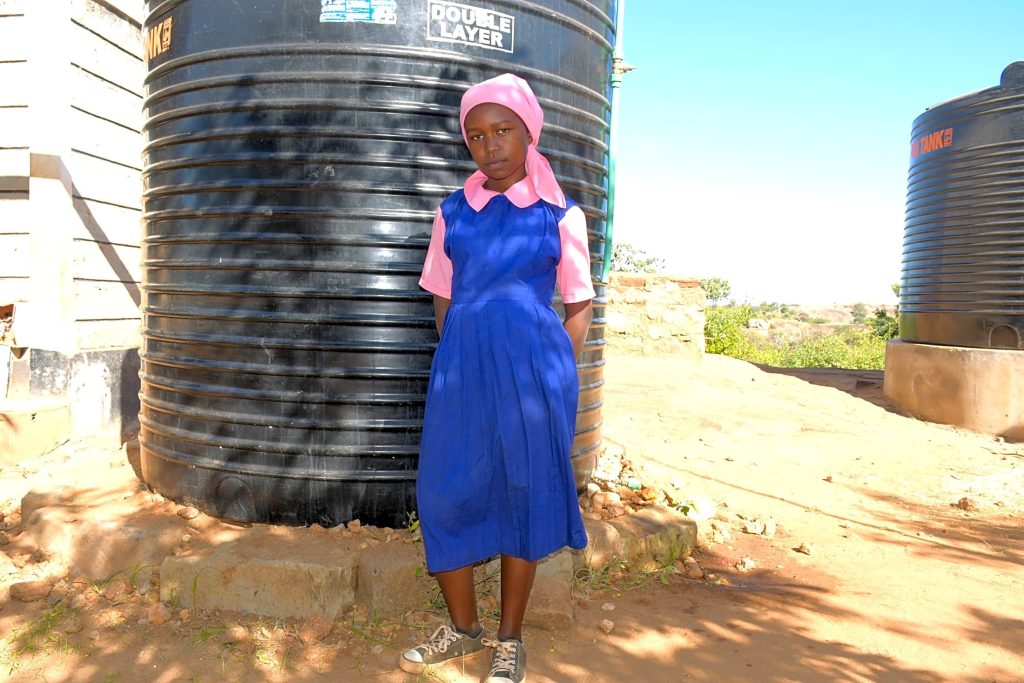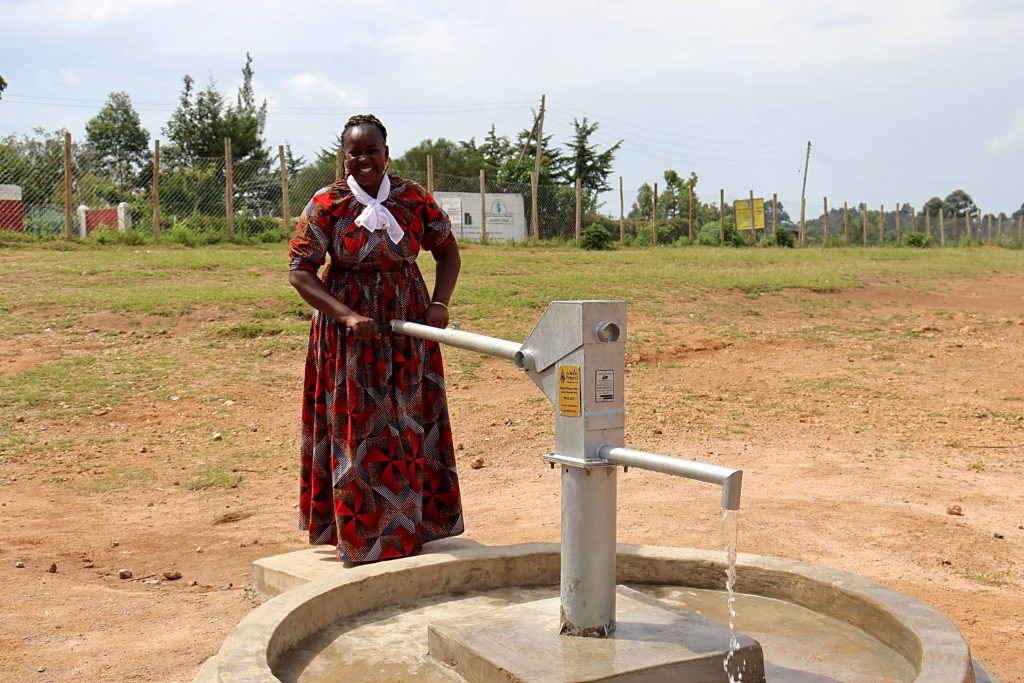When School is a Burden
When I was in primary, middle, and high school, my mom used to worry about me carrying my heavy backpack with me all day. Rather than forgetting my textbooks in my locker or at home, I always stored them all in my backpack so I’d never be without them. That backpack must have weighed a lot!
When rereading some reports for schools whose water projects are still awaiting funding, I thought of my mom’s concerns. These kids, like past-me, also have to bring their books to school. But unlike past-me, they have to collect water on their way to school and carry that burden, too. And kids in sub-Saharan Africa don’t have a bus to pick them up from home; they often walk miles upon miles carrying heavier burdens than I ever did.
It’s not fair.
In the United States, we’re in the midst of back-to-school season, with kids and parents gearing up for a new academic year or having already returned to class. While sub-Saharan Africa doesn’t follow the same school schedule as the United States, the kids we serve in Kenya, Sierra Leone, and Uganda will soon get a taste of excitement when they receive new water sources for their schools (and you can share in that excitement by bringing those water sources to life!).
Bringing Water to School
In sub-Saharan Africa, only 45% of schools have their own source of water on school grounds. School administrations ask kids to collect water and bring it with them. Some kids have their own water sources near home, which makes this task easier.
But for kids like 17-year-old Ruth M., who lacks any safe and reliable source of water either at school or at home, the journey is harder. She has to walk three miles to the closest dry riverbed to collect water from a contaminated scoop hole before continuing on to Ngungani Secondary School.
“Walking several kilometers in search of water is exhausting and time-consuming. I arrive at school tired, with my leg muscles burning from the long journey, which makes it difficult to focus in class,” Ruth said.

Even worse, sometimes Ruth doesn’t even get to drink the water she hauls because the school needs it for things like cleaning and handwashing.
“There are times when there is no water in school, and I have to stay thirsty despite the hotness in the region,” Ruth said.
Spending all day in a hot building without any water to drink would make anyone thirsty. Add to that a long journey between home and school and back again, and it’s no wonder that kids in sub-Saharan Africa often drop out early — many even before graduating from primary school.
Our field officer, Jefferson Mutie, spoke of a similar situation at Waasya Primary School in Southeast Kenya: “With the odds stacked against them, many students fall so far behind in their lessons that they eventually drop out of school altogether. They know that education could provide their only pathway out of poverty, but the immediate necessity of collecting water supersedes any dream for the future.”
Living at School Without Water
When my school day was done, the bus would bring me back home. I always hated the bus, because the kids were so loud, and I was one of the last stops even though the route passed my street multiple times. But if you’d asked me then if I would prefer the long bus ride over staying overnight at school, I would have been horrified at the prospect of not going home at all.
There are boarding schools in the United States, of course. But at boarding schools in sub-Saharan Africa, students are expected to keep themselves, their uniforms, and their environments clean day after day. But without water, this is not only difficult, it’s next to impossible.
“It is very frustrating to run operations in this school because water is essential in the pursuit of a better learning environment for the students,” said teacher John Miles from Kyamboo Secondary School in Southeast Kenya.
“The students and teachers [have] to bear with the unclean classrooms and latrines in the school because water is mostly used for drinking and cooking.”
“Returning to class without water to drink after lunch, like today, is demotivating and frustrating,” said 17-year-old Simon from the same school, Kyamboo.

“I find it very difficult to concentrate in class because I am distracted by thirst, and this has culminated in poor grades,” Simon continued. “I also have to resume class with my dirty plate and cup because there is no water in school. I have had to lick my plate clean or wipe it using papers, which causes contamination.”
But Simon knows that his education is incredibly important and could help him and his family escape poverty.
“We have to bear with the conditions because we strive for a better future through learning,” Simon continued. “I hope that one day we will have enough water in our school so that I can always drink clean water, wash my utensils, and improve my personal hygiene.”
But There’s Hope
The good news is that as soon as kids hear a new water source is coming, their hope reignites — like 14-year-old Lydia’s.
“I have been late for school due to water scarcity, which made me wake up very early to go [to] the river to fetch water to carry to school,” said 14-year-old Lydia from Waasya Primary School.

“Being late is punishable, as well as failing to bring water with me,” Lydia continued. “This left [me] in a limbo of [being between a] hard place and a rock. I am hopeful to get [a] quality education once we get water at school and achieve my dreams in a bigger and better way.”
I love Lydia’s renewed hope at the prospect of getting water for her school. And if we can fund the water project at her school, her dreams will be closer than ever to coming true.
With that funding, Lydia will not merely dream about a more hopeful future — she will live it. And when kids are empowered by access to safe, reliable water, it won’t be just their own futures that will change. Equipped with strong educations, the kids of sub-Saharan Africa will have the tools to build a better world.
“Water is life, and the future of this nation lies with our children,” said Headteacher Caroline Kadenge from Kapsoi Primary School, which received a new borehole well in May.

“Having clean, reliable, and safe water around [us] is peace, and our children will be mentally stable,” Caroline continued. “This will make them concentrate on their studies, hence becoming better people in [the] future and building the nation.”
With your help, we at The Water Project hope to lift the children of sub-Saharan Africa out of the endless dreariness of water scarcity and into a world where they can learn, dream, and thrive thanks to safe, reliable water.
Imagine Ruth tackling her work with renewed vigor because she didn’t have to stop for water on the way to school or carry a heavy container on her head.
Imagine Simon living in a clean school environment, restoring his dignity and his determination to learn.
Imagine the joy on Lydia’s face when she no longer has to choose between being late or being punished for not bringing water.
This is what your support can bring to life.
As Caroline said, water is life. With it, the children of sub-Saharan Africa can build a future where dreams become reality and hope is endless.
Home More Like ThisTweet